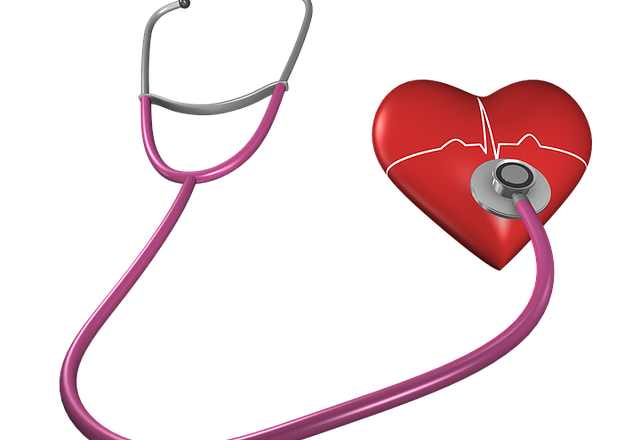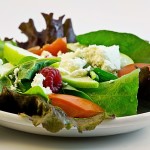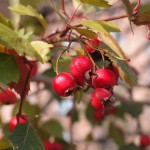
By Ellen Kamhi Ph.D., R.N., and Eugene Zampieron, N.D., A.H.G.
The word “cholesterol” has acquired a negative connotation in modern culture. Yet this important fatty substance, produced naturally by the liver, is an essential component of every cell membrane in the body, and is used by the body for synthesizing pregnenolone, the precursor of all endogenous steroid hormones. During chronic stress, the body shunts an increased fraction of pregnenolone toward the production of cortisol. As pregnenolone levels decrease, the liver manufactures more cholesterol in an attempt to meet the demand for pregnenolone, thus raising cholesterol levels in the blood. As a result, the indiscriminate reduction of blood cholesterol levels without a holistic understanding of why they may be elevated can be detrimental to hormonal balance and health.
Blood Cholesterol
The blood contains cholesterol in several different forms, including low-density-lipoprotein (LDL) or “bad” cholesterol and high-density- lipoprotein (HDL) or “good” cholesterol. Conventional recommendations for cardiovascular health include an HDL cholesterol level above 60 mg/dL, since every percent increase in this form of cholesterol is accompanied by a corresponding decrease of 3 to 4% in heart attack risk. LDL cholesterol should be kept below 100 mg/dL, and the total blood cholesterol level should be no higher than 200 mg/dL, since a total cholesterol above 240 mg/dL increases the overall risk of coronary heart disease (CHD). Nevertheless, American Heart Association statistics show that at least 102 million Americans have total blood cholesterol levels above 200 mg/dL.
The conventional treatment for high LDL or total cholesterol or both, includes recommending a healthy diet and regular exercise, often accompanied by a prescription for a statin drug that interferes with the endogenous hepatic synthesis of cholesterol. Statin drugs may also be effective in protecting against coronary heart disease through non-lipid-related mechanisms of action, which go under the general allopathic rubric of “pleiotropic effects”. For instance, the development of atherosclerosis is retarded by reducing the synthesis of thromboxane by platelets, since this blocks the risk of vascular inflammation and thrombosis. But statin drugs may have undesirable effects, including liver damage and the depletion of certain essential nutrients, such as coenzyme Q10 (CoQ10), an essential factor in oxidative metabolism. This latter effect may be linked to muscle debilities among some users of statin drugs. Because of this, pharmacists should suggest that clients using statin drugs take supplemental CoQ10 in a dose of at least 30 to 50 mg/day.
Nor do statin drugs increase “good” or HDL-cholesterol, or address other risk factors for heart disease that may in fact be more important than an elevated cholesterol level, and which include a low antioxidant status; increased blood levels of the amino acid homocysteine, recently identified as an independent risk factor for CHD ; low levels of essential fatty acids (EFAs), consumption of trans hydrogenated fats; mineral and flavonoid deficiencies; smoking; inactivity; obesity; the effects of infectious agents ; and Type “A” behavior, with its sense of urgency, impatience, and competitiveness. In fact, studies show that 50% of patients who develop CHD do not have high cholesterol levels, although they do usually have other risk factors for such disease. As a result, reliance on statin drugs for preventing CHD may lull patients into a false sense of security.
Diet
Practitioners of both allopathic and naturopathic medicine agree that diet plays a major role in controlling cholesterol levels. The main culprits in raising LDL-cholesterol include hydrogenated oil?found in almost all commercial baked goods, trans fats, as noted earlier, “junk foods,” and “fried foods.” Research has shown that a diet with a low carbohydrate content (“low-carb” diet) significantly lowers blood cholesterol levels while promoting a high level of satiety. The Portfolio Diet study combined a variety of foods known to have specific cholesterol-lowering properties, and compared the effect of this to the use of a statin drug combined with a low-fat diet.10 The foods used included plant sterols found in vegetables; nuts (almonds); seeds and legumes, which interfere with intestinal absorption of cholesterol; soy protein, which decreases hepatic production of cholesterol and reduces blood levels of LDL-cholesterol; and soluble fiber, which binds intestinal bile acids, stopping them from being recycled into cholesterol. After 1 month, the Portfolio Diet group showed a cholesterol reduction of 28%, which was comparable to that in the statin/low-fat-diet group. The pharmacist can therefore also encourage clients to follow a dietary regimen that ensures adequate and safe cholesterol control.
Exercise
Exercise is an important means for reducing cholesterol levels. Any kind of regular exercise is acceptable, as long as it is practiced for 30 to 45 minutes per day for 6 days per week. Here again the pharmacist can provide support by offering exercise videos and becoming a source of referral for local health clubs and physical therapy facilities.
Supplements
Various natural agents can help reduce undesirable levels of blood cholesterol. Practitioners of natural health care suggest that they be used along with a healthy diet, exercise, and a stress-reduction program. In many cases these supplements have multiple mechanisms of action that support overall cardiovascular health, in addition to reducing cholesterol levels. These mechanisms of action include decreasing the oxidation of LDL-cholesterol—an important factor in atherosclerosis, and decreasing platelet aggregation, endothelial damage, and smooth-muscle-cell proliferation.
Many of the natural anticholesterolemic agents are potent antioxidants, protecting collagen and elastin from oxidative damage and thereby strengthening connective tissue. Although natural cholesterol-lowering agents are not free of adverse effects, the incidence and severity of these are usually substantially lower than with pharmaceutical agents. Among the many dietary supplements that can be useful for cholesterol control are gamma-linolenic acid (GLA), garlic, and soy, as well as the agents discussed in detail below.
Hawthorn
Various species of hawthorn (Crataegus spp.), a shrub native to Europe, are used as official medicines on that continent. The summer green berries, flowers, and young spring leaves of hawthorn contain the highest percentage of medicinal components, which include flavonoids such as quercetin, vitexin, and rutin, as well as oligomeric procyanidins (OPCs). Several studies have shown the therapeutic value of hawthorne value in lowering blood cholesterol levels. – In addition, this botanical may help reduce blood pressure, increase coronary blood flow, and decrease the size of existing atherosclerotic plaques. OPCs stimulate the release of endothelial nitric oxide synthase (ENOS), an enzyme that increases the levels of nitric oxide (NO), which is a vasorelaxant and acts to decrease platelet aggregation and adhesion, as well as inhibiting the oxidation of LDL- cholesterol, all of which can protect against atherogenesis and thrombus formation.
In using hawthorn to reduce blood cholesterol, we recommend a 6:1 preparation, providing 2 g of concentrated solid extract of hawthorn in one-fourth teaspoon of water, juice or other liquid three times daily. Hawthorn may be standardized to 2% vitexin, 1.8% vitexin-4’-rhamnoside, and/or 20% procyanidins per dose. European products are often standardized to 2.2% flavonoids. Other popular preparations include hawthorn capsules and tablets, which vary from 200 to 900 mg per dose.
There is no restriction on the long term use of hawthorn. Although adverse effects of its use have not been reported, hawthorn may potentiate antiarrhythmic medications, antihypertensive medications including angiotensin converting enzyme inhibitors (ACE), cardiac glycosides, and beta-blocker drugs. Dose modification of the prescription medication may be required.
Guggulipid
Guggulipid, or gum guggulu, is a yellow gum oleoresin extracted from the stem of the Commiphora mukul tree, which is native to India. Ancient Sanskrit texts suggest that guggulipid was traditionally used as a treatment for obesity and associated lipid-related disorders, for arthritis and bronchitis, and topically for skin diseases. , The active components of guggulipid are lipid-soluble steroids classified as guggulsterones. Although one short-term study found that guggulipid did not improve serum cholesterol levels in adults with hypercholesterolemia, many other clinical trials have illustrated that it has positive effects on the cardiovascular system. These include reductions in hyperlipidemia, inhibition of platelet aggregation, and anti-inflammatory and antioxidant effects. Guggul also inhibits LDL oxidation, thereby protecting against atherogenesis.
Guggul preparations are usually standardized to contain 2.5 to 10% guggulsterones Z and E per dose. A common dosage range is 500 to 1,000 mg of standardized extract taken 3 times a day.
Adverse reactions linked to guggul have included skin rashes, diarrhea, headache, mild nausea, indigestion, and hiccoughs. Guggul should not be used in acute kidney infections, and alcohol and exposure to the sun should be avoided when taking this herb. Additionally, because guggul has been shown to reduce both serum cholesterol and triglycerides, it should be used with caution for persons taking drugs designed to have these same effects. Guggul may also have an additive effect with anticoagulants, and can act as a thyroid stimulating agent, which can affect the dosage of thyroid medications. Contrastingly, guggul can decrease the absorption of beta blockers and calcium-channel blockers, and dosage levels of these drugs may have to be adjusted if guggul is used concomitantly with them.
Policosanol
Policosanol is a mixture of long-chain aliphatic alcohols isolated from sugar cane (Saccharum officinarum) wax, whose main component is octacosanol. This supplement has been shown to lower blood cholesterol levels in animal models, healthy human volunteers, and patients with type II hypercholesterolemia. While conventional statin drugs directly inhibit the enzyme HMG-CoA reductase, which is the rate-limiting enzyme in the hepatic metabolic pathway to cholesterol synthesis, policosonal limits this same enzyme indirectly. Policosanol has proven equivalent to or better than several statin drugs?simvastatin, pravastatin, lovastatin, probucol, or acipimox?in reducing cholesterol levels in patients with hypercholesterolemia, and has fewer side effects. This dietary supplement also decreases several other risk factors for CHD by decreasing the oxidation of LDL cholesterol, platelet aggregation, endothelial damage, and smooth-muscle-cell proliferation.
Fifteen double-blind, placebo-controlled trials, ranging in duration from 6 weeks to 12 months and collectively involving more than 1,000 subjects, have found policosanol to be effective for lowering total and LDL cholesterol, the ratio of LDL to HDL cholesterol, and the ratio of total cholesterol/ to HDL cholesterol. Most of these trials have been done at the Surgical Medical Research Center in Havana, Cuba with policosanol derived from Cuban sugar cane. One randomized, double-blind, placebo-controlled trial examined the effects of 5 to 10 mg of policosanol per day for 12 months on the lipid profile of 589 older patients with hypertension and type II hypercholesterolemia, and without a history of congestive heart disease. The study found that policosanol improved all parameters of the lipid profile with great statistical significance.
A number of comparative studies have been done of policosanol versus commonly prescribed statin drugs. In one such study in which policosanol was tested against pravastatin over an 8-week period in an older population with hypercholesterolemia, it proved more effective at improving all lipid profile markers, and with a high degree of statistical significance. In another study, comparing policosanol at 10 mg/day with atorvastatin at 10 mg/day, the latter was slightly more effective than policosanol at reducing total cholesterol, while policosanol was more effective at raising HDL cholesterol, by 5.3% vs. no increase with atorvastatin, without any reported adverse reactions.
The American Heart Journal evaluated the peer-reviewed literature on placebo-controlled lipid-lowering studies using policosanol and found that at doses of 10 to 20 mg/day, policosanol reduced both total and LDL cholesterol while raising HDL cholesterol. The Journal further stated that at dosages of up to 20 mg/day, policosanol is safe and well tolerated. The study concluded that policosanol is a “very promising phytochemical alternative to classic lipid-lowering agents such as the statins, and deserves further evaluation.”
The usual dosage of policosanol is from 5 to 20 mg twice daily. Cautions include possible adverse reactions including migraine, insomnia, dizziness, irritability, stomach upset, and skin rash. Since policosanol can inhibit platelet aggregation, it may have an additive interactive effect with antiplatelet and anticoagulant drugs. Its concomitant use with these drugs may also theoretically increase bruising and bleeding. Furthermore, policosanol can reduce blood pressure and may enhance this effect of beta-blocker drugs. Its concomitant use with the latter drugs therefore requires careful and regular monitoring of blood pressure.
Red Yeast Rice
Red yeast rice is the fermented product of rice on which red yeast (Monascus purpureus) has been grown. Dietary supplements prepared from red yeast rice have been shown to significantly decrease total cholesterol levels in hyperlipidemic subjects. One of the ingredients in red yeast rice, monacolin K, inhibits the production of cholesterol by retarding the action of HMG-CoA reductase in the liver, therefore reducing the endogenous manufacture of cholesterol. This mechanism of action mirrors the activity of the statin drugs. Although red yeast rice contains several naturally occurring lipid-lowering substances, such as mevinolin, its statin content is believed to be too small to explain its hypolipidemic effects. Other components of red yeast rice, such as sterols and isoflavones, may be instrumental in its cholesterol-lowering activity.
A 12-week, double-blind, placebo-controlled trial conducted at the Center for Human Nutrition of the UCLA School of Medicine evaluated the effects of 2.4 g/day of red yeast rice versus placebo in 83 patients with hyperlipidemia who were not being treated with lipid-lowering medication. The study found significant reductions in total cholesterol and LDL cholesterol in the red yeast rice group as compared to the placebo group, without a significant change in HDL cholesterol. An earlier Chinese multi-center study reported similar results.
The usual dosage of red yeast rice is 1.2 to 2.4 g/day. Mild adverse reactions to this supplement include gastrointestinal gas, heartburn, and dizziness. More serious adverse reactions include elevation of liver enzymes, and persons with liver disorders should therefore not use this supplement. Because red yeast rice inhibits HMG-CoA reductase, its use should be accompanied by daily supplementation with 30 to 60 mg of Coenzyme Q10.
References
1. Wilson, PWF. High-density lipoprotein, low-density lipoprotein, and coronary heart disease. Am J Cardiol 66:7A-10A, 1990.
2. Lloyd-Jones DM, Wilson PW, Larson MG, et al. Lifetime risk of coronary heart disease by cholesterol levels at selected ages. Arch Intern Med 163(16):1966-1972, 2003.
3. Krysiak R, Okopien B, Herman Z. Effects of HMG-CoA reductase inhibitors on coagulation and fibrinolytic processes. Drugs 63(17):1821-1854, 2003.
4. Hargreaves IP. Ubiquinone: Cholesterol’s reclusive cousin. Ann Clin Biochem 40(Pt. 3):207-218, 2003.
5. Mortensen SA. Overview on coenzyme Q10 as adjunctive therapy in chronic heart failure. Rationale, design and end-points of “Q-symbio”–A multinational trial. Biofactors 18(1-4):79-89, 2003.
6. Spencer CG, Martin SC, Felmeden DC, et al. Relationship of homocysteine to markers of platelet and endothelial activation in “high risk” hypertensives: a substudy of the Anglo-Scandinavian Cardiac Outcomes Trial. Int J Cardiol 94(2-3):293-300, 2004.
7. Broxmeyer L. Heart disease: The greatest “risk” factor of them all. Med Hypotheses 62(5):773-779, 2004.
8. Greenland P, Knoll MD, Stamler J, et al. Major risk factors as antecedents of fatal and nonfatal coronary heart disease events. JAMA 290(7):891-897, 2003.
9. Johnston CS, Tjonn SL, Swan PD. High-protein, low-fat diets are effective for weight loss and favorably alter biomarkers in healthy adults. J Nutr 134(3):586-591, 2004.
10. Jenkins DJ, Kendall CW, Marchie A. Effects of a dietary portfolio of cholesterol-lowering foods vs lovastatin on serum lipids and C-reactive protein. JAMA 290(4):502-510, 2003.
11. Taylor RS, Brown A, Ebrahim S, et al. Exercise-based rehabilitation for patients with coronary heart disease: systematic review and meta-analysis of randomized controlled trials. Am J Med 116(10):682-692, 2004.
12. Ernst E. Cardioprotection and garlic. Lancet 349(9045):131, 1997.
13. Anderson JW, Cook-Newell ME, Johnstone BM. Meta-analysis of the effects of soy protein intake on serum lipids. NEJM 333:335, 1995.
14. Crataegus spp. in: Mills S, Bone K. Principles and Practice of Phytotherapy: Modern Herbal Medicine. Materia Medica. London: Churchill Livingstone, 2000, pp. 440-447.
15. Shanthi S, Parasakthy K, Deepalakshmi PD, et al. Hypolipidemic activity of tincture of Crataegus in rats. Indian J Biochem Biophys. 1994 Apr;31(2):143-6.
16. la Cour B, Molgaard P, Yi Z. Traditional Chinese medicine in treatment of hyperlipidaemia. J Ethnopharmacol 46(2):125-129, 1995.
17. Walker AF, Marakis G, Morris AP, et al. Promising hypotensive effect of hawthorn extract: a randomized double-blind pilot study of mild, essential hypertension. Phytother Res 16(1):48-54, 2002.
18. Taskov M. On the coronary and cardiotonic action of crataemon. Acta Physiol Pharmacol Bulg 3(4):53-57, 1977.
19. Wegrowski, J., Robert AM, Moczar M. The effect of procyanidolic oligomers on the composition of normal and hypercholesterolemic rabbit aortas. Biochem Pharm 33:3491-3497, 1984.
20. Fitzpatrick DF, Bing B, Rohdewald P. Endothelium-dependent vascular effects of Pycnogenol. J Cardiovasc Pharmacol 32(4):509-515, 1998.
21. Tirtha, SS. The Ayurvedic Encyclopedia. Section 3: Therapies: 4: Herbology. Bayville, NY: Ayurveda Holistic Center Press,
1998, p. 87.
22. Commiphora mukul, in: Bone, K. Clinical Applications of Ayurvedic and Chinese Herbs: Monographs for the Western Practitioner. Chapter: Warwick, Queensland, Australia: Phytotherapy Press, 1996, pp. 108-111.
23. Szapary PO, Wolfe ML, Bloedon LT, et al. Guggulipid for the treatment of hypercholesterolemia: A randomized controlled trial. JAMA 290(6):765-772, 2003.
24. Verma SK, Bordia A. Effect of Commiphora mukul (gum guggulu) in patients of hyperlipidemia with special reference to HDL-cholesterol. Indian J Med Res 87:356-360, 1988.
25. Singh BB, Mishra LC, Vinjamury SP, et al. The effectiveness of Commiphora mukul for osteoarthritis of the knee: An
outcomes study. Alt Ther Health Med 9(3):74-79, 2003.
26. Singh RB, Niaz MA, Ghosh S. Hypolipidemic and antioxidant effects of Commiphora mukul as an adjunct to dietary
therapy in patients with hypercholesterolemia. Cardiovasc Drugs Ther 8(4):659-664, 1994.
27. Wang X, Greilberger J, Ledinski G, et. al. The hypolipidemic natural product Commiphora mukul and its component
guggulsterone inhibit oxidative modification of LDL. Atherosclerosis 172(2):239-246, 2004.
28. Panda S, Kar A. Gugulu (Commiphora mukul) induces triiodothyronine production: possible involvement of lipid
peroxidation. Life Sci 65(12):137-141, 1999.
29. Dalvi SS, Nayak VK, Pohujani SM, et al. Effects of Gugulipid on Bioavailability of Diltiazem and Propranolol. J Assoc Physicians India 42(6):454-455, 1994
30. Menendez R, Amor AM, Rodeiro I, et al. Policosanol modulates HMG-CoA reductase activity in cultured fibroblasts. Arch
Med Res 32(1):8-12, 2001.
31. Janikula M. Policosanol: a new treatment for cardiovascular disease? Alt Med Rev 7(3):203-217, 2002.
32. Bratman S, Girman A. Mosby’s Handbook of Herbs and Supplements and Their Therapeutic Uses. Philadelphia: Mosby,
2003, p. 812.
33. Rippe J, Bonovich K, Colfer H, et al. A multi-center, self-controlled study of Cholestin in subjects with elevated cholesterol.
Circulation 99:1123, 1999.
34. Castano G, Mas R, Fernandez J, et al. Effects of policosanol on older patients with hypertension and type II
hypercholesterolaemia. Drugs R D 3(3):159-172, 2002.
35. Castano G, Mas R, Fernandez L. Comparison of the efficacy and tolerability of policosanol with atorvastatin in elderly patients with type II hypercholesterolaemia. Drugs Aging 20(2):153-163, 2003.
36. Gouni-Berthold I, Berthold HK. Policosanol: Clinical pharmacology and therapeutic significance of a new lipid-lowering agent. Am Heart J 143(2):356-365, 2002.
37. Arruzazabala ML, Valdes S, Mas R, et al. Comparative study of policosanol, aspirin and the combination therapy policosanol-aspirin on platelet aggregation in healthy volunteers. Pharmacol Res 1997; 36(4): 293-207.
38. Torres O, Agramonte AJ, Illnait J. Treatment of hypercholesterolemia in NIDDM with policosanol. Diabetes Care 1995;18(3): 393-397.
39. Man RY, Lynn EG, Cheung F. Cholestin inhibits cholesterol synthesis and secretion in hepatic cells (HepG2). Mol Cell Biochem 233(1-2):153-158, 2002.
40. Heber D, Yip I, Ashley J. Cholesterol-lowering effects of a proprietary Chinese red-yeast-rice dietary supplement. Am J Clin Nutr 69(2):231-6, 1999
41. Wang J, Lu Z, Chi J, et al. Multicenter clinical trial of the serum lipid-lowering effects of a Monascus purpureus (red yeast) rice preparation from traditional Chinese medicine. Curr Ther Res 58:964-978, 1997.
42. Burnham TH, Sjweain SL, Short RM (eds). Monascus. In: The Review of Natural Products. St. Louis, MO: Facts and Comparisons, 1997.




Most people should aim for an LDL level below 130 mg/dL (3.4 mmol/L). If you have other risk factors for heart disease, your target LDL may be below 100 mg/dL (2.6 mmol/L). If you’re at very high risk of heart disease, you may need to aim for an LDL level below 70 mg/dL (1.8 mmol/L). In general, the lower your LDL cholesterol level is, the better. There is no evidence that really low LDL cholesterol levels are harmful.
Red yeast rice naturally contains several ingredients that may help control cholesterol levels. These include a number of monacolins, most importantly monacolin K. It also contains sterols, isoflavones, and monounsaturated fatty acids, or “healthy fats.”*`”;
My own internet site <http://www.picturesofherpes.co/index.php/